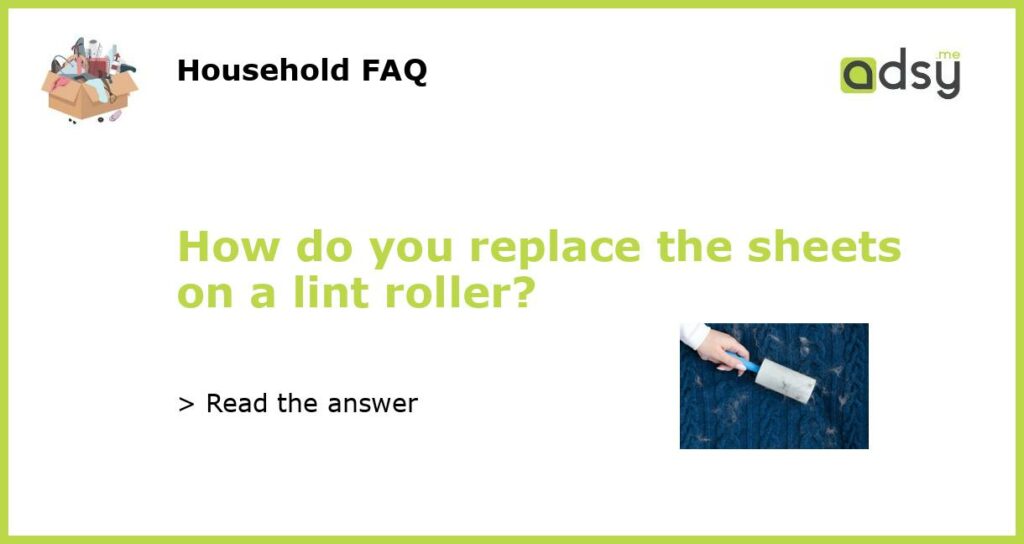Understanding the importance of a lint roller
A lint roller is a simple tool designed to remove lint, dust, and pet hair from clothing and furniture. It works by using a sticky surface to pick up debris as you roll it over the fabric. While a lint roller is a great way to keep your clothes looking clean and fresh, it is important to know how to properly replace the sheets when they become too dirty or worn out.
Step 1: Remove the old sheet
The first step in replacing the sheets on a lint roller is to remove the old sheet. This is typically done by pulling on the edge of the sheet until it comes loose from the roller. If the sheet is particularly dirty or difficult to remove, you may need to use a pair of scissors to cut it away from the roller.
Step 2: Position the new sheet
Once the old sheet has been removed, it is time to position the new sheet. Most lint rollers come with spare sheets that are designed to fit over the roller. If you do not have a spare sheet, you can easily purchase them from a variety of retailers.
Step 3: Remove the protective layer
Before applying the new sheet, you will need to remove the protective layer. This is typically a thin piece of paper or plastic that covers the sticky surface of the new sheet. Simply pull on the corner of the protective layer until it comes loose from the new sheet.
Step 4: Apply the new sheet
Once the protective layer has been removed, it is time to apply the new sheet to the roller. Begin by aligning one end of the sheet with the edge of the roller and then pressing it into place. Slowly roll the sheet around the roller, ensuring that it is evenly applied and free from any air bubbles or wrinkles.
Maintaining a clean and functional lint roller
Replacing the sheets on a lint roller is a simple and easy process that can help you maintain a clean and functional tool. By following these steps, you can ensure that your lint roller is always ready to use when you need it most.






